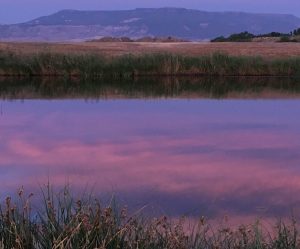Federal Budget Toolkit: Federal Funding for Clean and Ample Water
River Network originally developed this Federal Budget Toolkit in 2017 to support communities and watershed groups in fighting back against proposed federal budget cuts that threatened to harm local waterways.
The updated toolkit provides information and resources to assess the impacts of federal budget decisions on your state and community, how to advocate for federal investment, and tips for effectively communicating with decision makers and the media about budget priorities. Resources include model action alerts, social media materials and sample stories that do a great job of communicating the value of federal investment and the true impacts of proposed budget cuts.
Federal Budget Toolkit
Budgetary decisions impact funding for essential programs that safeguard our environment and our drinking water every fiscal year. More than half of all state environmental agencies get one quarter of their funding from the federal government. Federal agencies with important programs affecting our waterways, include the US Environmental Protection Agency, US Department of Agriculture, Bureau of Reclamation, and the National Oceanic and Atmospheric Administration, to name just a few. Budget decisions affect these agencies and many others in terms of hiring and maintaining a strong workforce, ensuring scientific research funding, and the ability to enforce regulations.
The collective efforts of river and conservation groups around the country make a big difference in budget decisions.
We’re ready to continue working with you, our other partners, and the network of groups protecting water resources across this country—from the smallest creeks to Lake Superior—to ensure Congress continues to hear us and do what’s right for current and future generations.
The traditional federal budget process starts with the President’s budget request, which serves as a signal to Congress of the Administration’s taxing and spending priorities. The statutory deadline for the President’s budget submission is February 1, but it’s not enforced.
It is up to Congress to pass a federal budget, known as the Congressional Budget Resolution. The deadline for adoption of the concurrent resolution on the budget is April 15, but this timeline is often dragged out. Following adoption of the resolution, Congress considers annual appropriations bills that fund various programs. The deadline to pass a spending package is October 1 of each year. In recent years, many spending bills have been passed by a “Continuing Resolution” (CR), which essentially extends the budget from the previous year until an agreement on the budget can be reached. If a continuing resolution is not passed and a budget isn’t passed by Oct. 1, a government shutdown is forced.
During the appropriations process, subcommittees of the House and Senate Appropriations Committees write the text for their subject matter area for the appropriations bill. The 12 subcommittees are:
- Agriculture, Rural Development, Food and Drug Administration, and Related Agencies
- Commerce, Justice, Science, and Related Agencies
- Defense
- Energy and Water Development
- Financial Services and General Government
- Homeland Security
- Interior, Environment, and Related Agencies
- Labor, Health and Human Services, Education, and Related Agencies
- Legislative Branch
- Military Construction, Veterans Affairs, and Related Agencies
- State, Foreign Operations, and Related Programs
- Transportation, and Housing and Urban Development, and Related Agencies
For an excellent overview of the federal budget process, and what happens when the parties cannot agree, see the Center on Budget and Policy Priorities Introduction to the Federal Budget or this infographic.
Each year, it is critical that Congress hear from you about the importance of the EPA and the various agencies and programs that protect our water and our lives. We need to highlight the value federal investments bring to our communities and waterways. Doing so also has the benefit of raising these issues and signaling that there is broad support for these investments and opposition to any attempts to rollback critical environmental funding.
Our voices on funding issues are critically important, and decision makers need to hear how important federal programs and agencies are to our communities and watersheds. Together, we need to tell our senators and representatives and the Administration that we support investment in clean, safe, and affordable drinking water, healthy rivers, conservation on agricultural lands, and climate resiliency across the nation.
Use this 3-Step Federal Budget Advocacy Guide to help you:
- Find a key local issue to focus on
- Assess the impacts budget decisions will have in your community and/or watershed
- Tell – and amplify – your story
Resources from Resource Media:
- Toolbox includes tip sheets on messaging, strategy, media, and more
- Building a Message
- Letters to the Editor
- Writing a slam-dunk op-ed
- Media Relations 101
- An introduction to nonprofit issue advocacy videos
Environmental Protection Network:
Environmental Council of States:
- ECOS Green Report: Status of State Environmental Agency Budgets Fiscal Years 2016 to 2019 (published June 2020)
Association of Clean Water Administrators (ACWA):
Center for American Progress:
Environmental Defense Fund:
- Deep EPA cuts put public health at risk– Features FT 2020 budget proposal impacts to states and EPA programs. While a bit outdated, still features robust background information.
US EPA:
Examples Calling for FY 2022 Action:





